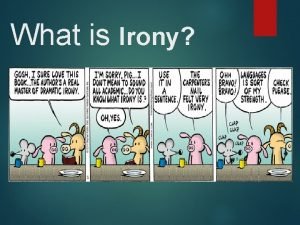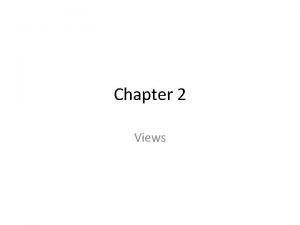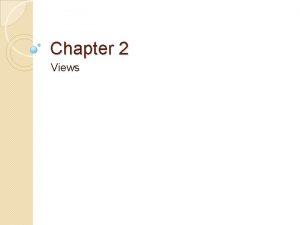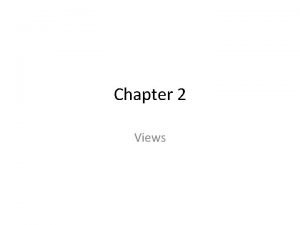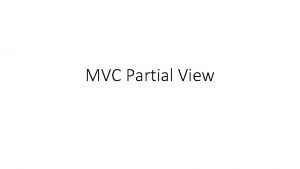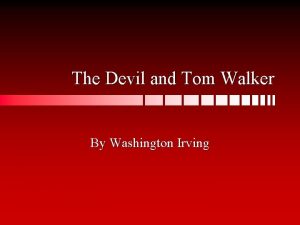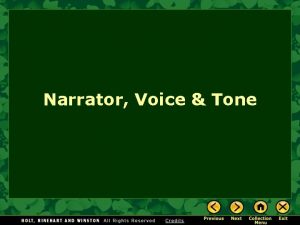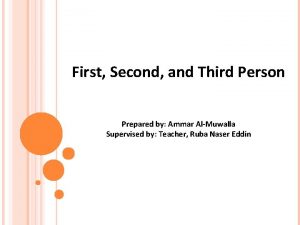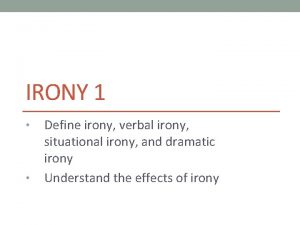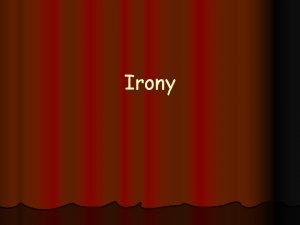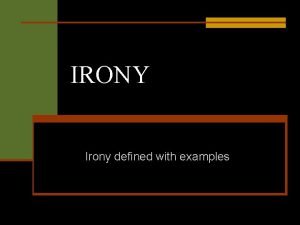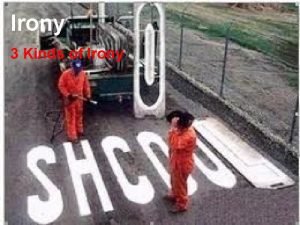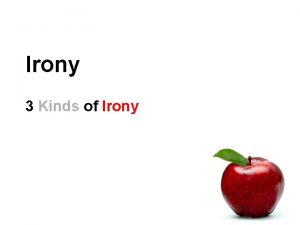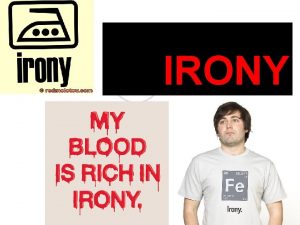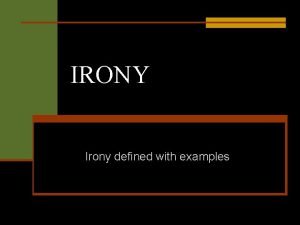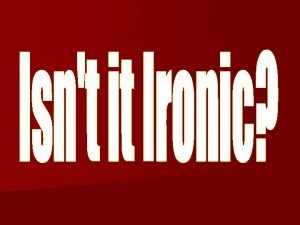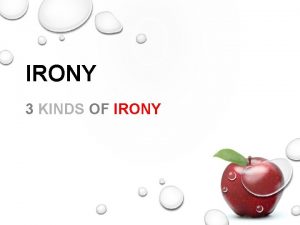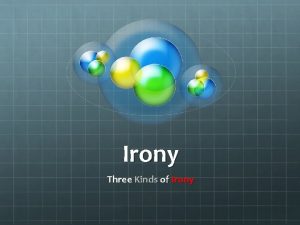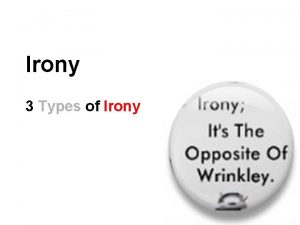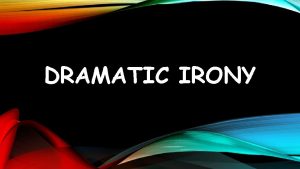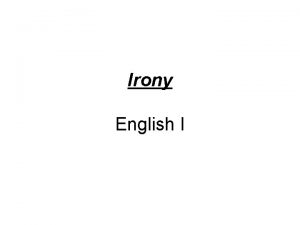Irony and Point of View Point of View















- Slides: 15

Irony and Point of View

Point of View • Point of view is the perspective from which the story is told. This will influence the perspective that the reader has of characters, events, etc. within the story.

Point of View Omniscient Narrator Limited Omniscient Narrator • The narrator is all seeing and all knowing. • The author limits the narrator’s omniscience to only one character, about whom they know all. They can tell the reader what that character is thinking, but cannot do so for the other characters. • They know the past, present and future of all of the characters, and may take the reader into the characters’ minds to tell us what they are thinking • The story is written in third person • The story is written in the third person.

Point of View First Person Narrator Objective Narrator • The narrator becomes a character in the story. • The narrator tells the story as though they are a video camera. • They know all about the character’s past and what is happening to them at present, but cannot predict the future. • They tell only what they see and hear and do not try to interpret or go into the feelings of the characters. • The story is written in the first person. • The story is written in the third person.

Irony

What is Irony? • Irony is a contrast between what is expected and what actually happens. • The ironical writer presents a surface meaning – what is said – and an intended meaning – what is really meant. The reader must discern the difference. • Irony is used primarily by the author to suggest the complexity of life and experience.

3 Types of Irony • Verbal Irony • Dramatic Irony • Situational Irony

Situational Irony http: //www. youtube. com/watch? v=tqg 6 RO 8 c_W 0 • Occurs when what actually happens is opposite of what is expected • The discrepancy between appearance and reality or between expectation and fulfillment or between what is and what would seem appropriate • It is used to engage the audience and keep them actively involved in the storyline. Examples: • A fire station burns down • Bill Gates uses an Apple computer

Verbal Irony • http: //www. youtube. com/watch? v=Ii. R-bn. CHIYo • When a character says one thing, but means the opposite • Some verbal irony sounds like sarcasm, and in fact most sarcasm is verbal irony in an extremely simple form. Examples: • “The locker room smells really good” • “Lovely weather we have been having”

Dramatic Irony • http: //www. youtube. com/watch? v=RZFYu. X 84 n 1 U • Occurs when the audience is aware of something that the characters are not. • This type of irony is commonly used to engage and involve audience in the storyline. Examples: • Tim’s parents are proud of an “A” he got on a test, but we know that he cheated. • Alex writes a love poem to Judy, but we know that Judy loves Jared.

Identify the following examples of irony as situational, verbal, or dramatic …

When watching a talk show, the audience knows why a person has been brought onto the show. However, the person is unaware that they will soon be reunited with a long lost friend


Your date shows up for the dance in ripped jeans and a stained t-shirt. You say, “Oh! I see you dressed up for the occasion. ”

 Whats verbal irony
Whats verbal irony Bird's eye view angle
Bird's eye view angle Simple view and complex view
Simple view and complex view Simple view and complex view
Simple view and complex view Simple view and complex view
Simple view and complex view Mvc partial view controller
Mvc partial view controller Supply chain cycle
Supply chain cycle Components of os
Components of os Integration view of ethics
Integration view of ethics Solid drawing
Solid drawing Hub-and-spoke vs point-to-point airlines
Hub-and-spoke vs point-to-point airlines Mood of the devil and tom walker
Mood of the devil and tom walker Tone of narrator
Tone of narrator First second and third point of view
First second and third point of view Plot diagram of the lion and the mouse
Plot diagram of the lion and the mouse The bass the river and sheila mant irony
The bass the river and sheila mant irony
